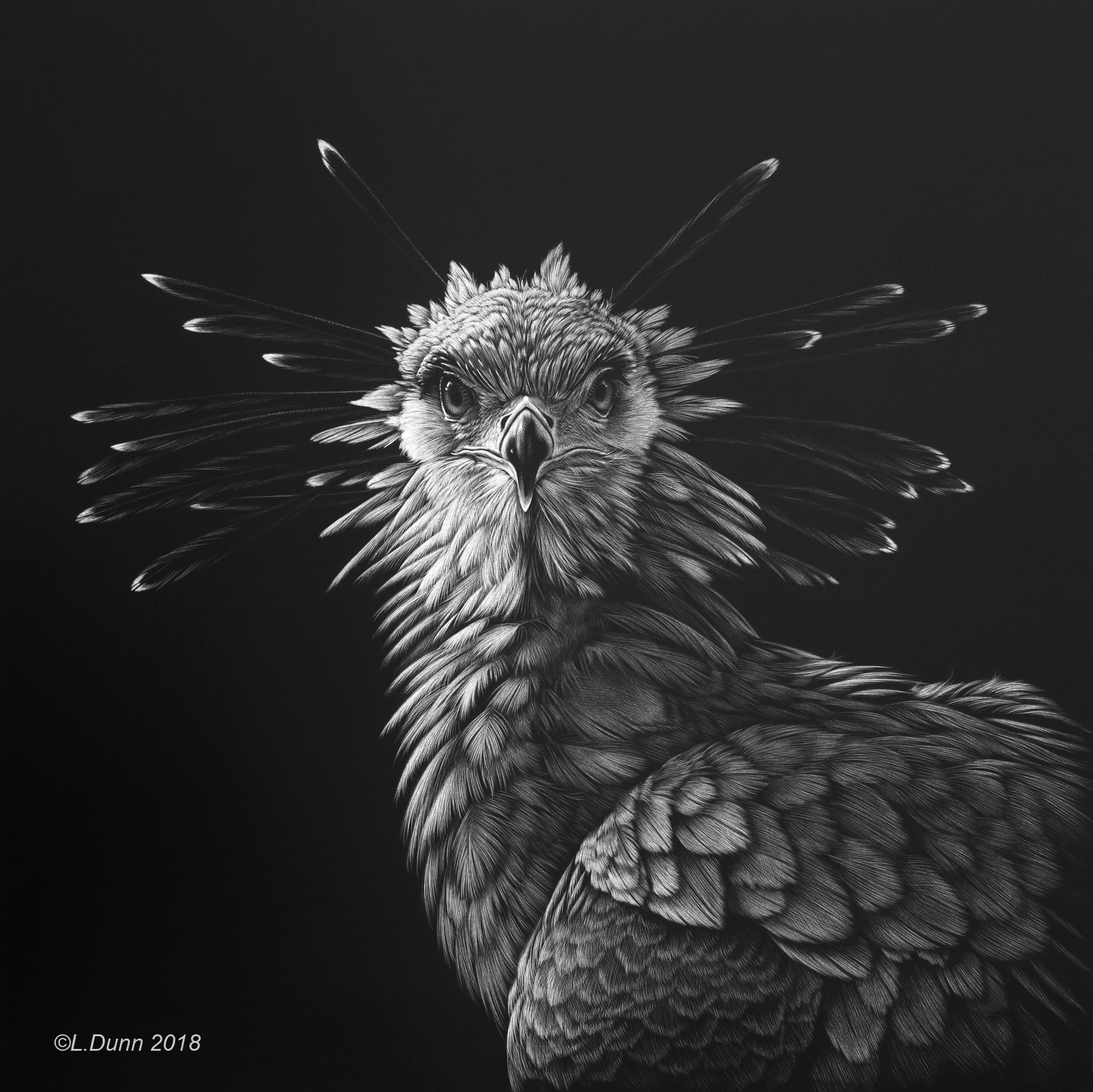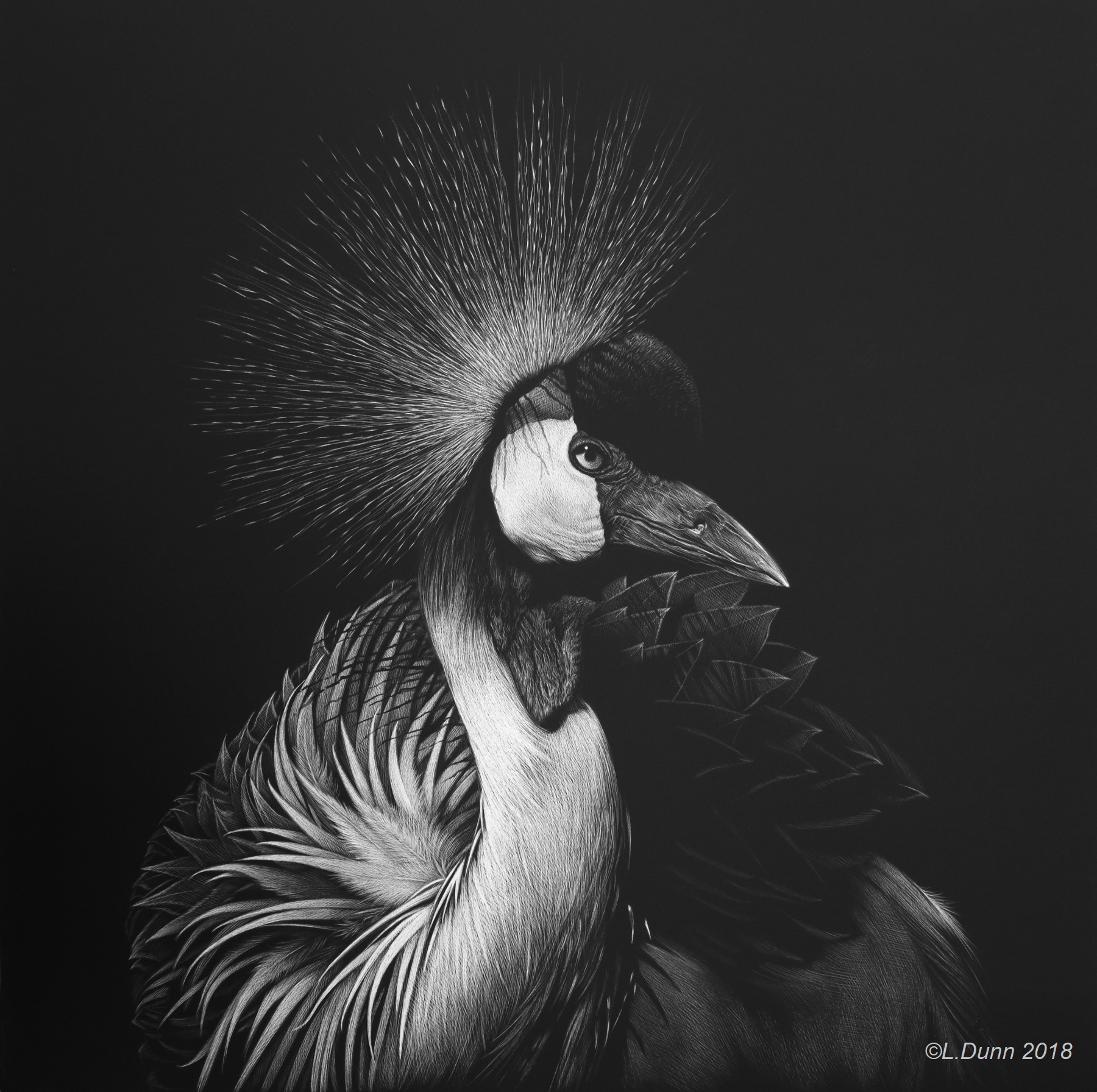LORI DUNN SCRATCHBOARD ART
promoting conservation through artistic efforts
Headdress I Headdress II
10 x 10 10 x 10
SOLD AVAILABLE
These two spectacularly ornamented African birds were chosen as a pairing of portraits for very obvious reasons! The secretary bird (Headdress I, Sagittarius serpentarius) sports long, black, quill like feathers from the back of its head, that are tipped in white, while the Grey crowned crane (Headdress II, Balearica regubrum) showcases a dome like crown of thin, stiff feathers individually ringed in white and tipped in black. I always like to learn something new about each species that I depict in my artwork and in doing this pair I chose to focus on the purpose of these specialized plumes.
Generally, in bird species where there is sexual dimorphism (males and females differing in appearance), most biologists agree that ornamental plumage on males is used to make them appear attractive to potential mates. Often, feathers are ruffled, lifted, fanned or wagged in a showy fashion during breeding season. In the case of the secretary bird and crowned crane, however, both sexes have the same head gear. So what gives? Secretary birds are able to lift and spread the feathers on the back of their head at will, the feathers laying flat most of the time. Usually this is during times of excitement and/or alarm. Many other species of birds are also able to raise head crests or fan tail feathers during such times. Most behaviorists agree that these signals are used to indicate an individual's emotional state to other birds. In contrast, the crown crane's halo seems to be a stationary decoration. But what is its purpose if both sexes have one and it doesn't move? - these are the questions I ask myself as I'm working!
Certainly cranes are known for their elaborate courtship "dances" and it has been suggested that as they raise and lower their heads in dramatic fashion, the crowns act as further visual stimuli, but I really did not come up with a solid answer to this question. Secretary birds, although not cranes, but birds of prey, resemble cranes in also having elaborate courtship behavior, and in both cases either males or females can initiate mating with the pairing being monogamous. A lot is at stake in obtaining a lifelong mate and ornamental feathers can play an important role in this regard. I wondered if this feature of the crowned crane had to do with imprinting of the chicks. Many birds raise and feed their young for a long period of time. Chicks need to zone in on the appearance of their parents in order to survive and learn how to identify potential mates in the future. Perhaps the "crown" is just an identifying feature and nothing more.
In reading further, my search took me through the evolution of ornamental plumage back to the age of dinosaurs. In 2007 a fossil was discovered of a dinosaur which had 8 inch long ribbon-like feathers adorning it. The age of this specimen gave good evidence that display feathers evolved long before those that enabled flight. Other examples of dinosaurs have also been unearthed showing elaborate feather structures predating flight. While their purpose on these specimens is speculation, it would seem that display feathers have had a complex and fascinating ancestry and evolution. Most scientists agree that these specializations in modern day birds are used to send important visual signals essential to a wide range of behaviors. I'm sure there may be better answers to my questions out there somewhere, but part of the fun for me is in the wondering, and at the end of the day, I'm still just as happy to observe and enjoy.

